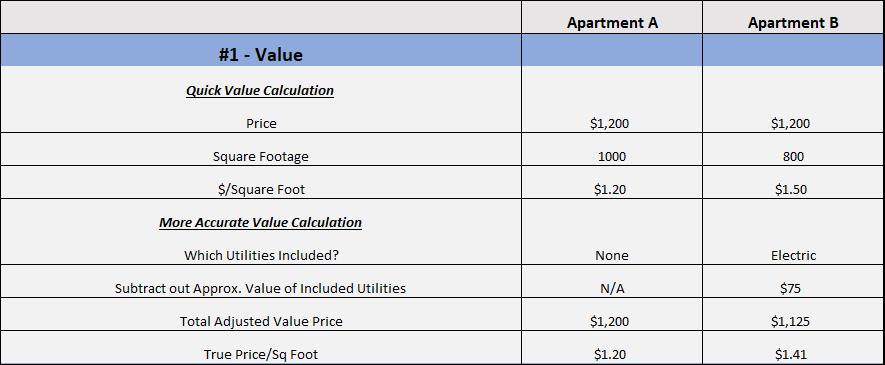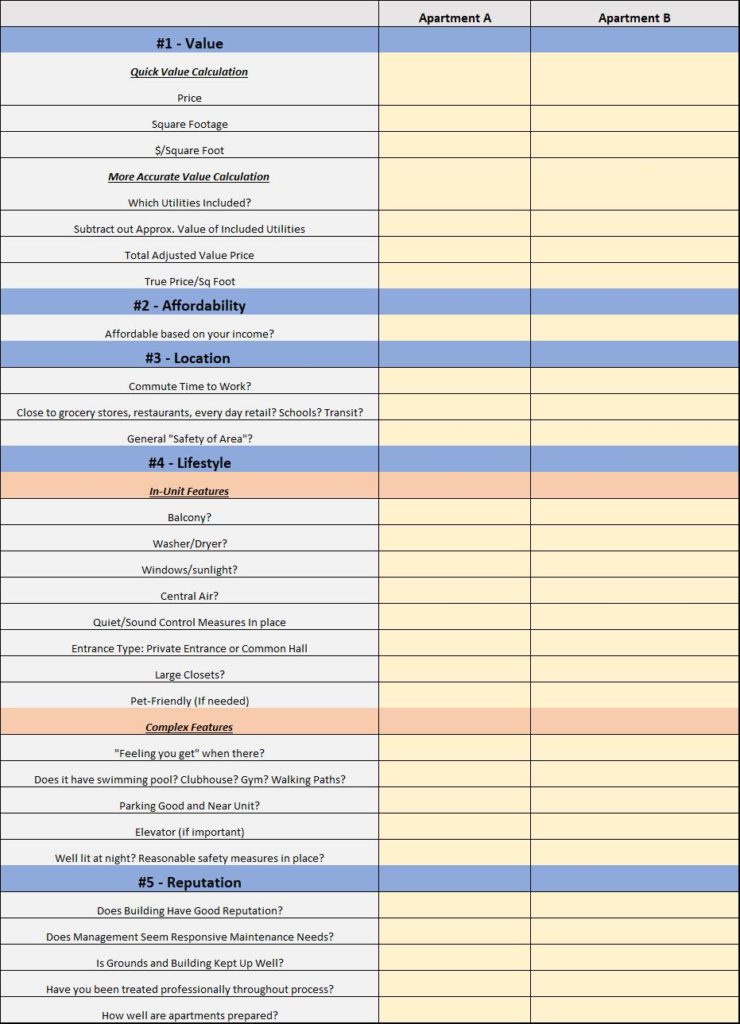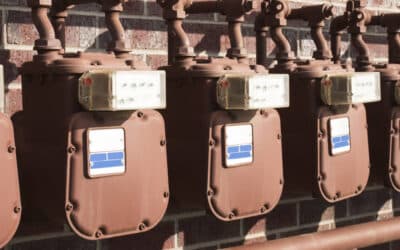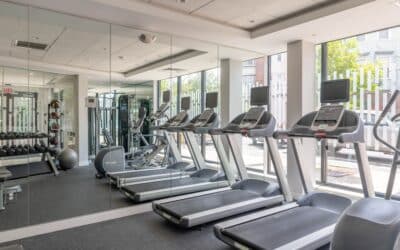You’ve got your apartment search to two apartments, but you are trying to figure out which apartment between the two to choose?
Fortunately, there is an easy way to choose. Follow the steps below.
At the bottom is a worksheet, you can use to easily compare apartments.
1. Compare $ Value
If you are at the grocery store, and see a small box and big box of your favorite oatmeal. Which one would you get? To determine the best deal, you should calculate which package has more oatmeal. Which one is the better deal!
Similarly, to figure out what’s the best deal for an apartment, you CANNOT just look at the rent price. You need to take into account apartment size (square footage) as well.
Divide total rent by square footage to calculate price per square foot. For example, $1,200 / 1,000 = $1.20 per square foot.
Explanation & Example (Optional Reading)

Let’s take an example.
- Apartment A is $1,200 in rent and 1,000 square feet in size.
- Apartment B is $1,200 in rent and 800 square feet in size
- Apartment A is $1.20 per square foot
- $1,200 / 1,000= $1.20 square foot
- Apartment B is $1.50 per square foot
- $1,200 / 800 = $1.50 square foot
Apartment A is actually a much better deal!
Do the same math for the apartments you are comparing, and input values into the chart.
For an even more accurate value calculation, you need to know whether utilities are included in each and then subtract out the approximate value of included utilities. Then, take that new adjusted number and divide by square footage. Check out this blog post on comparing apartment prices if you need more assistance with this.
2. Compare Affordability
Next up on the chart is affordability. How affordable is each apartment? If both apartments are +/- $10 for example, it probably doesn’t create an affordability issue for you. However, if one apartment is $100 more a month, it very well might.
Be sure to take “affordability” into consideration when comparing apartments. This is a personal decision based on your income.

3. Compare Location
The next part is location. Get up Google Maps or a similar map tool that lets you calculate travel time and calculate the following for each apartment:
- Distance to work
- Distance to grocery stores, schools, restaurants, transit.
Focus on commute time, rather than mileage.
In evaluating location, it’s prudent to look into general crime statistics of the areas. If both apartments are in the same neighborhood, there may not be a difference. No area or neighborhood is ever crime-free but historical crime rates can be measured, and should be researched as part of your search process.
4. Compare the “Lifestyle”
Here we are talking about features and amenities…
In-Unit features – Which apartment has items you want on your list.
- Balcony
- Washer/Dryer (in-unit or nearby)
- Central Air
- Quiet/Sound Control Measures in place
- Entrance Type
- Large Closets
- Pet-Friendly (if needed)
- Windows/Sunlight
Apartment Complex Features – Which Apartment has:
- A better feeling when you are on site
- Amenities you want (i.e. swimming pool, clubhouse, gym)
- Is parking good?
- Is there an elevator (if important to you)
- Well lit at night?
- Reasonable safety measures in place? (See 14 Questions To Ask About Safety.)
5. Compare Reputation / Management
Few things will destroy your experience like bad management. Now that you have researched the above, you need to take into consideration the reputation of management.
- Does the building have a good reputation?
- Does management seem responsive to maintenance requests?
- Are the grounds and building well kept?
- Have you been treated professionally through the process?
- Have you asked others and the building how apartments are prepared?
Once you compare these features and fill out the chart, you should easily be able to make a decision about what is right for you. The good news is that most leases are 12 months so if you don’t like it, you can always move out at the end of your lease. Careful planning and research will help avoid mistakes.
You can print the below blank summary comparison chart, and then fill it out if you’d like.

Quick Summary Video (if you prefer)






